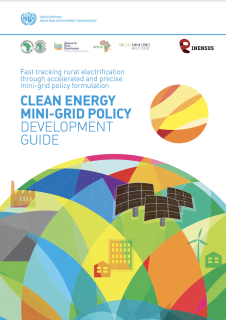
The new Clean Energy Mini-Grid Policy Development Guide aims to help policymakers navigate the renewable mini-grid market, providing them with tools and recommendations on how to approach policies and regulations in this space. The guide outlines the various forms and models that public-private cooperation could take and reflects on the outcomes of policy decisions on mini-grid deployment.
Based on key lessons learned from existing mini-grid policies and regulations, the publication also presents a decision tree designed for policymakers to guide them through the decision-making process. The guide draws five main conclusions:
- Sustainable mini-grid business models require scale.
- The way in which mini-grids are deployed, including the degree of private sector involvement, depends on decisions taken by governments.
- Close government control over mini-grid deployment, minimum financial subsidies and low end consumer tariffs cannot all be achieved at the same time.
- The development of electricity demand in rural areas is difficult to predict, making it important to introduce demand risk mitigation instruments in the policy framework.
- The risk of a sudden end to the project, i.e. the termination risk, should be considered by policymakers and regulators.
